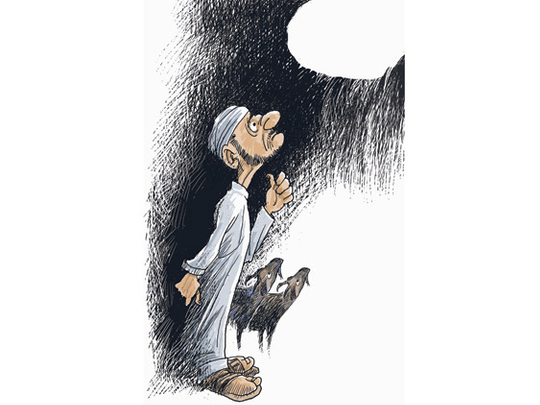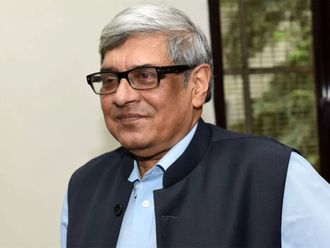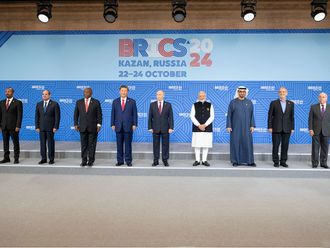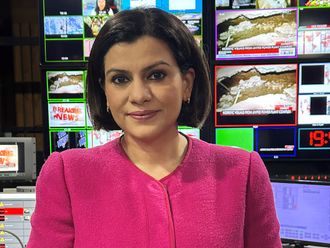
Poverty, illiteracy and endemic disease are all major factors preventing millions of people from achieving their full potential. Living in the Gulf, these problems might seem far away, but a shocking report from the United Nations on the lack of progress over the Millennium Development Goals has spelt out how the Arab world has failed to tackle many of these issues.
For example, between 1990 and 2005 the percentage of people in West Asia living in extreme poverty which the UN defines as living on less than $1.25 (Dh4.6) a day — has increased from two per cent to six per cent. The United Nations does not use the term ‘Middle East' (thanks to the old problems of defining "East of what?" and "Middle to where?") and prefers to call it West Asia, which includes all the GCC states and the Arab Levant and Iraq, as well as Turkey and Cyprus, but does not include Iran.
It is disturbing that the amount of extreme poverty has grown so sharply in this region, where economic development is apparently steadily improving. It may be that the large populations of Turkey and Iraq have their own problems, but even in the GCC poverty is an issue.
King Abdullah Bin Abdul Aziz of Saudi Arabia provoked a wave of public comment when he became the first Saudi monarch in decades to visit some of his poor subjects in their shanty-town shacks, and to formally recognise that action had to be taken on behalf of poverty-stricken Saudis.
Difficult lives
Closer to home in the UAE, anyone who has visited the desert and wadi areas of the country will have seen and maybe talked to the subsistence farmers who eke out a tough life running their herds of goats on the barren hillsides, and cultivating their small fields in the wadi beds or perched on minuscule terraces. Their lives are hard and demanding, offering little opportunity for anything other than continuous work, limiting their opportunities for growth.
In most parts of the Gulf, the governments will have put plans in place to support such people, but across the wider region the UN reports that West Asia is still struggling to meet its development goals. For example, the percentage of undernourished children has risen from five per cent in 1990 to eight per cent in 2000, and had only just begun to decline when the food and economic crisis reversed progress. What is also disturbing is that the proportion of under-weight children has not changed, remaining at a constant 14 per cent between 1990 and 2008.
The UN reports that in terms of gender equality the region still lags behind the rest of the world, with a very small 20 per cent of women earning their livelihoods outside agriculture. Another measure is that only 10 per cent of senior and managerial positions are held by women, and only nine per cent of parliamentarians are women.
In the absence of regular news about the Millennium Development Goals (MDGs), it is easy to forget what they are. In 2000, targets for 2015 were set in eight broad areas to combat human suffering and deprivation, which is drastically limiting the potential of millions of people. Together they create a framework under which the international community can focus its development efforts to reach all human beings all over the world. The hope is that if these MDGs are achieved, world poverty will be cut by half, tens of millions of lives will be saved, and billions more people will have the opportunity to benefit from the global economy.
Measurable progress
What makes the eight MDGs different from many other past development targets is that they have been broken down into 21 quantifiable targets that are measured by 60 indicators. This means that the UN can measure success and failure, and report back to the world at large on what still needs to be done.
The eight goals are: Eradicate extreme poverty and hunger; Achieve universal primary education; Promote gender equality and empower women; Reduce child mortality; Improve maternal health; Combat HIV/Aids, malaria and other diseases; Ensure environmental sustainability; and Develop a global partnership for development.
Despite being outlined over 10 years ago, the MDGs do not look likely to be met by 2015. They have suffered from the fact that our multi-polar world can only handle one crisis at a time, and our diplomats do not have the capacity to multi-task. For the first few years, progress on the MDGs was strong, as the rich world, rejoicing in the long economic boom of the 2000s, was happy to divert some of its money to good causes.
But when worries grew over climate change and the need to fight global warming, a lot of the international effort was switched to planning how to get all 150 nations to reduce carbon emissions. Then the recession arrived and suddenly the international priorities changed again, and stopping the recession became far more important than either the MDGs or climate change. This was a mistake.








